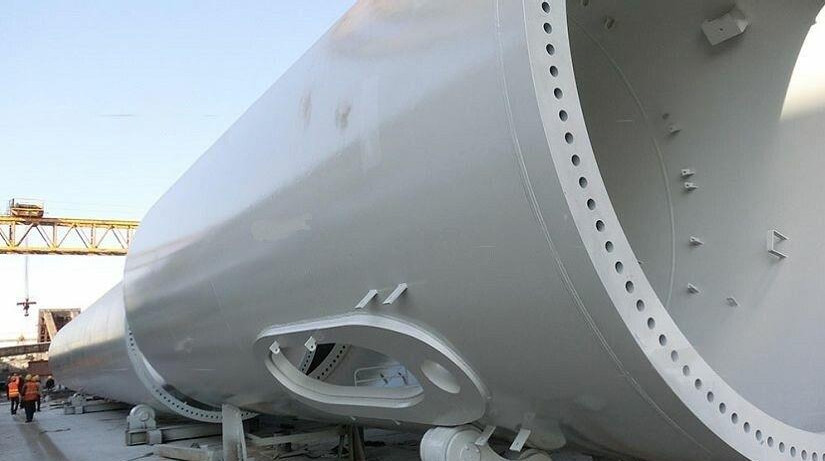Pipe rehabilitation technology
Rehabilitation of Industrial Pipelines of large diameter plays a key role in maintaining their stable functionality and extending their operational lifespan. These measures help restore and enhance the hydraulic properties of the pipes, ensuring more efficient transportation of liquids or gases. Additionally, systematic reconstruction helps prevent corrosion, wear, and other types of damage, minimizing the risk of leaks or operational failures.
Based on our company's extensive experience, the following methods demonstrate the best results in pipeline rehabilitation in terms of time and cost savings, as well as reducing downtime:
- application of Plastigun 307 polymer coating for internal pipe surfaces;
- use of the trenchless installation technology with SpiroBur DG spiral pipes.
PIPELINE RECONSTRUCTION USING PLASTIGUN 307 POLYMER COATING

PlastiGun 307 is a high-performance copolymer coating system designed for effective protection of surfaces made of steel, aluminum, fiberglass, concrete, and other materials from high-pressure washes, corrosion, erosion, as well as chemical and abrasive wear.
This spray-applied plastic, applied by thermal spraying, is adapted for use in various conditions, both internal and external. PlastiGun 307 copolymer, designed for universal application, provides a significantly denser and thicker layer compared to conventional coatings, forming an extremely reliable protective system distinguished by exceptional strength and durability, without the risk of deformation or sagging.
Thanks to its increased flexibility compared to traditional coatings, PlastiGun 307 can withstand bends and twists caused by vibrations and movements of elements. It is also resistant to damage such as scratches, chips, and corrosion.
Long-term protection against abrasive, chemical, and corrosive effects ensures the continuous operation of equipment over an extended period.

The trenchless installation method with SpiroBur DG spiral pipes is one of the most advanced and cost-effective methods for renovating water supply networks.
In many settlements and large industries, the service life of water supply and sewage systems is significantly exhausted, leading to frequent accidents and downtime, which are unacceptable for the normal operation of facilities and can cause serious consequences.
Using special equipment, SpiroBur DG pipes, formed into a single line on the surface, are pulled underground and drawn through existing pipelines, providing double protection both through the SpiroBur DG pipes themselves and through the metal framework of the old pipelines.
The innovative method of manufacturing SpiroBur DG pipes allows the creation of products of any non-standard sizes for ideal matching with the diameters of renovated pipelines. When reconstructing long sections, "technological holes" can be located up to 500 meters apart, and the pulling process itself is fast.
Advantages of SpiroBur DG technology for pipeline rehabilitation include:
- Cost savings due to the absence of soil removal work (SpiroBur – 500 m, conventional rehabilitation technology – no more than 100 m), compared to other rehabilitation methods;
- Low cost of SpiroBur pipes compared to other PE, fiberglass, polyurethane pipes, etc.;
- The technology does not require quality control of the internal surface preparation;
- Reliability and guaranteed quality significantly extend the service life of existing systems (up to 50 years);
- Possibility of manufacturing SpiroBur pipes of unique external diameters for maximum "fit" to the internal diameters of the rehabilitated pipelines;
- Possibility of performing work with technological holes located up to 500 meters apart, significantly simplifying relations with landowners;
- Rehabilitation work can be carried out at any time of the year without significant influence from weather conditions;
- Transparent control of the entire technological process;
- Predictable and understandable technology;
- Faster installation speed compared to other rehabilitation methods or laying new lines;
- Minimizing the "human factor".
